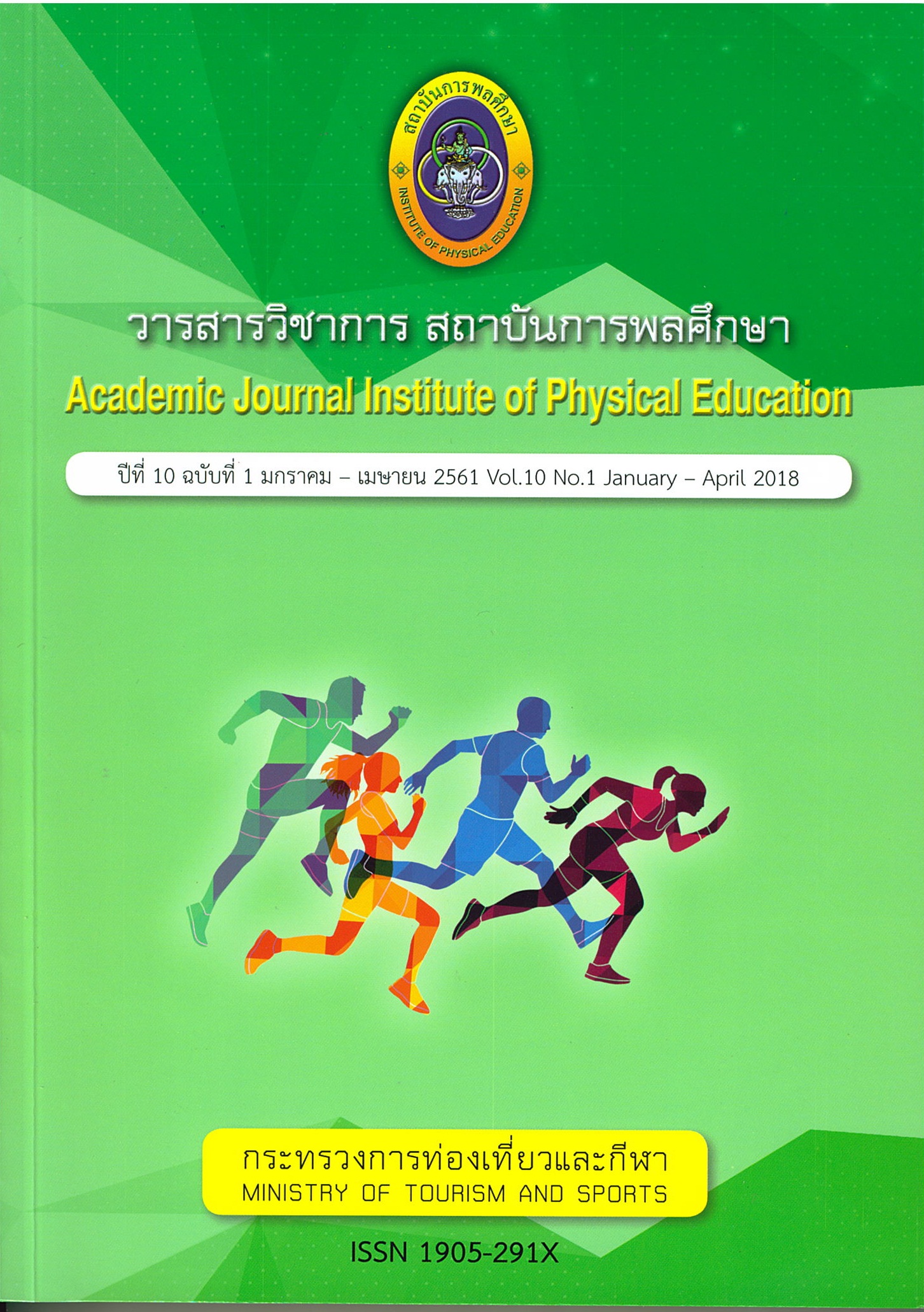Potentiality and Attraction of Health Tourism Destination in Thai Regions
Main Article Content
Abstract
This research is aimed 1) to study the potentiality and physical characteristics of health tourism destination and 2) to study the model management and service in health tourism of health tourism destination in Thailand. Samples included 24 personnel, who were responsible for health tourism destination management in 15 provinces in 4 regions of Thailand, from both public and private sectors, and 1,600 foreign tourists who came to visit the health tourism destinations in which the research had been conducted. The researcher had conducted the research in 24 prominent health tourism destinations in Thailand employing mixed method research which included survey research and qualitative research. The data collection tools were observation form, semi-structure interview guide, questionnaire, content analysis, and quantitative analysis which represented frequency, percentage, and mean.
The result was found that 3 types of Thailand health tourism destinations which had high potentiality and strong identity are natural health tourism destination, man-made health tourism destination, and integrated health tourism destination. Thailand possessed scenic and abundant health tourism destinations. Some are deemed as World Heritage. Moreover, the combination of natural resources and Thai traditional intellect was applied to create health promoting programs. Most destinations were well managed following required standards. Some were guaranteed by national and international awards. However, sanitation around the destinations needed to be improved. The destinations lacked English speaking personnel and information in English. Besides, public relations communication channels also needed to be increased.
Article Details
The published article is a copyright of the Academic Journal of Thailand National Sports University. The passage appeared in each article in this academic journal is a perspective of each author which is not related to the journal. Each author is required to be responsible for all components of his/her own article. If there are any mistakes, each author must be responsible for those mistakes on his/her own.
References
กระทรวงการท่องเที่ยวและกีฬา. (2559). รายงานภาวะเศรษฐกิจท่องเที่ยว ฉบับที่ 3(มกราคม-มีนาคม2559). กรุงเทพมหานคร: เอ็กเซลเลนท์ บิสเนส แมเนจเม้นท์.
การท่องเที่ยวแห่งประเทศไทย. (2553). การวิจัยโครงการสำรวจพฤติกรรมและความพึงพอใจของนักท่องเที่ยวชาวต่างประเทศกลุ่มสุขภาพความงาม. กรุงเทพมหานคร: บริษัท มาร์เก็ตไว้ส์ จำกัด.
การท่องเที่ยวแห่งประเทศไทย. (2554). แผนพัฒนาและส่งเสริมการท่องเที่ยวของการท่องเที่ยวแห่งประเทศไทย. [ออนไลน์]. แหล่งที่มา: http://tourismthailand.org/.tourismthailand_index/th/. [30 สิงหาคม 2558]
เกษม จันทร์แก้ว. (2559) การสัมมนาวิพากษ์ผลลัพธ์การวิจัย แผนงานวิจัยเรื่อง การพัฒนาศักยภาพอุตสาหกรรมการท่องเที่ยวเชิงสุขภาพของไทยเพื่อเป็นศูนย์กลางการท่องเที่ยวเชิงสุขภาพในเอเชีย วันที่ 19 พฤษภาคม 2559 ณ ห้องประชุมสถาบันการพลศึกษา กรีฑาสถานแห่งชาติ ปทุมวัน กรุงเทพฯ
ทรงธรรม สุขสว่าง. (2559) การสัมมนาวิพากษ์ผลลัพธ์การวิจัย แผนงานวิจัยเรื่อง การพัฒนาศักยภาพอุตสาหกรรมการท่องเที่ยวเชิงสุขภาพของไทยเพื่อเป็นศูนย์กลางการท่องเที่ยวเชิงสุขภาพในเอเชีย วันที่ 19 พฤษภาคม 2559 ณ ห้องประชุมสถาบันกาลพลศึกษา กรีฑาสถานแห่งชาติ ปทุมวัน กรุงเทพฯ
สุนิษา เพ็ญทรัพย์ และปวันรัตน์ แสงสิริโรจน์. (2555) พฤติกรรมและความพึงพอใจของนักท่องเที่ยวชาวไทยต่อการท่องเที่ยวเชิงสุขภาพ กรณีศึกษาบ่อน้ำพุร้อนรักษะวาริน อำเภอเมือง จังหวัดระนอง. มหาวิทยาลัยราชภัฏสวนสุนันทา.
อริศรา ห้องทรัพย์. (2558). แนวทางพัฒนาการจัดการท่องเที่ยวเชิงสุขภาพแหล่งน้ำพุร้อนในภูมิภาคทางตอนเหนือของประเทศไทย. วารสารวิทยาศาสตร์การกีฬาและสุขภาพ, 16(3) (กันยายน- ธันวาคม 2558) : 76-90.
Smith, M. and Puczko, L. (2009). Health and Wellness Tourism. Oxford :Elsevier.


